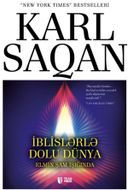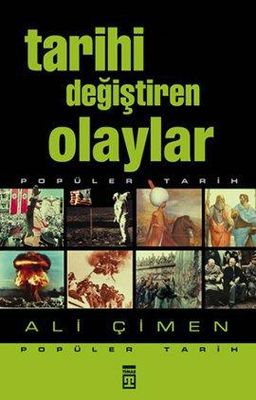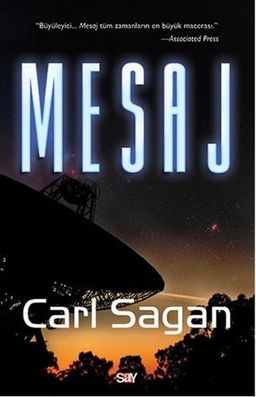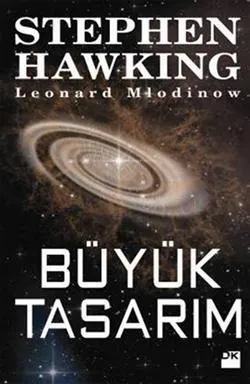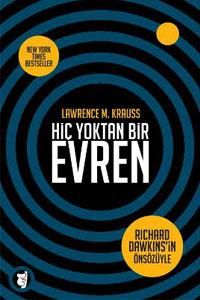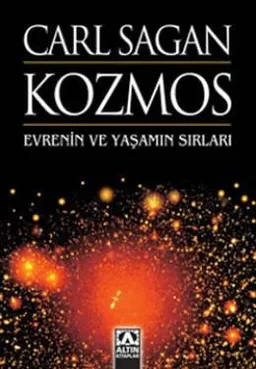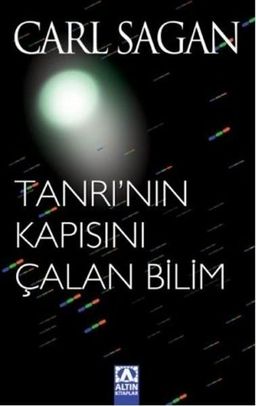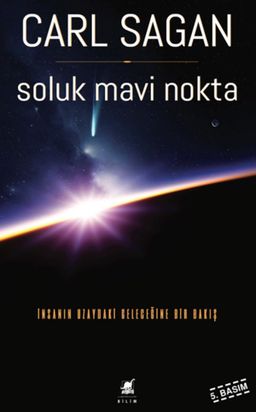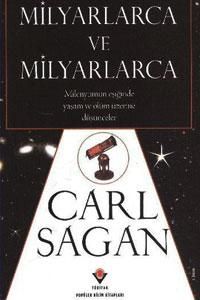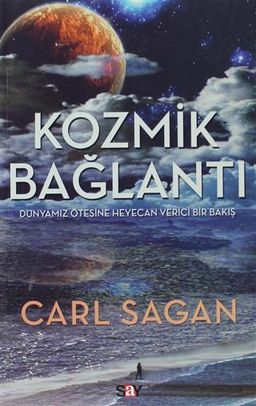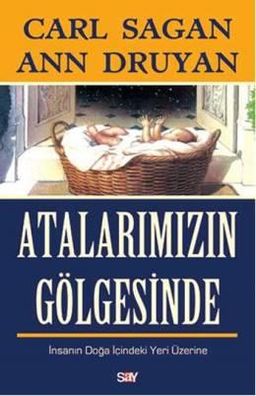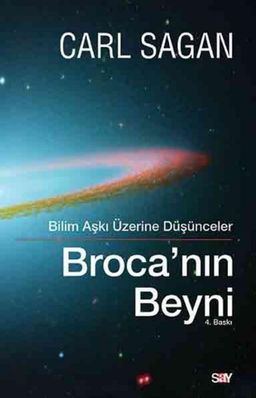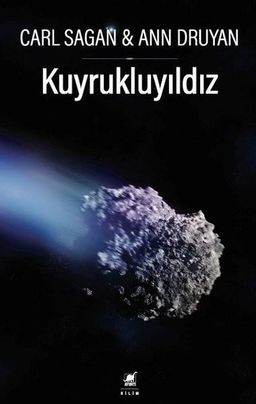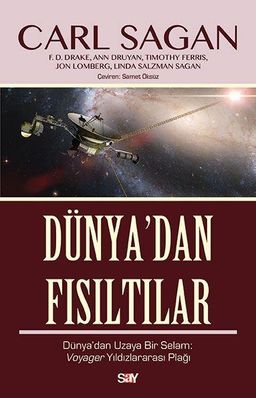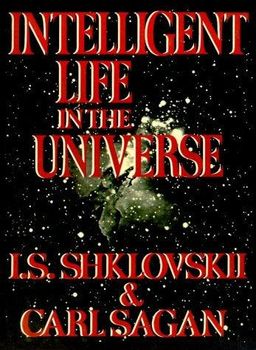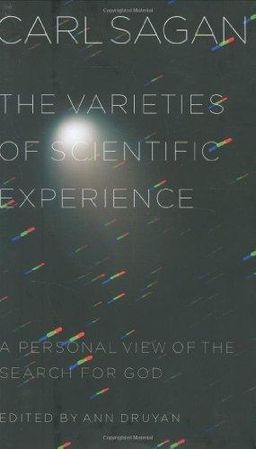About İblislərlə Dolu Dünya
İblislərlə Dolu Dünya subject, statistics, prices and more here.About
Psevdoelmin mifləri, "Yeni çağ" düşüncəsi və təəssübkeşliklə elmin sınanıla bilən fərziyyələri arasındakı fərqi bilməsək, texnologiyanın getdikcə daha çox rol oynadığı həyatımızda rasional qərarları necə verə bilərik?
Karl Saqan tarixə və mədəniyyətə geniş perspektivdən baxaraq, cadugərlik, dua ilə şəfa, iblislər və UNO-lar kimi geniş yayılmış illüziyaları analizlə ifşa edir. Çağımız "informasiya dövrü" adlandırılsa da, mövzusu "yadplanetlilər tərəfindən qaçırılma" və ekstrasenslik olan psevdoelm geniş yayılır, müştərək hallüsinasiyalar diqqət çəkir və ciddi qəbul edilir. Saqan ağılsızlığın siren nəğməsinin sadəcə səhv yola dönmək yox, həm də fundamental hüquqlarımızı təhdid edən qaranlığa qərq olmaq mənasına gəldiyini çox sərrast şəkildə izah edir.
Author: Carl Sagan
Translator: Yalçın İslamzadə
Estimated Reading Time: 14 hrs. 44 min.Page Number: 520Publication Date: 2018First Publication Date: November 2010Publisher: Teas Press NəşriyyatıOriginal Title: The Demon-Haunted World: Science as a Candle in the DarkISBN: 9789952310245Country: AzerbaijanLanguage: AzericeFormat: Karton kapak
Book Statistics
All statistics
Statistics of this edition
Reader Profile of the Book
Kadın% 34.6
Erkek% 65.4
0-12 Yaş
13-17 Yaş
18-24 Yaş
25-34 Yaş
35-44 Yaş
45-54 Yaş
55-64 Yaş
65+ Yaş
About the Author
Carl SaganYazar · 14 books
This text has been automatically translated from Kurdish. Show Original
Carl Edward Sagan was born on November 9, 1934 in New York. His interest in astronomy, which started at a very young age, became a growing passion when supported by his family, and he became an astronomer known all over the world. While he was dealing with astronomy at a young age, he was wondering "how will you make a living?" He was stunned by the question. He was very happy to learn that he was paid for this job while he was in high school. However, this joy was not because he would earn money, but because he could deal with astronomy all day long without having to do another job to make ends meet. The most important feature of Carl Sagan is his ability to explain the universe, which is a complex phenomenon with all its physical and mathematical aspects, clearly to even the most ordinary person. When he continued this skill in the literary environment, he became a Pulitzer Prize-winning scientist. In addition to the high-level scientific studies he carried out in his 62 years of life, he also showed that he was a very good science writer with more than 20 books he wrote or edited.
Sagan's scientific curiosity led him to earn four undergraduate degrees from the University of Chicago. The most important of these, of course, were diplomas in physics and astronomy and astrophysics. When Carl Sagan died, he was the David Duncan Professor at Cornell University, which he entered in 1968, and the director of the Planetary Research Laboratory at the same university. His work on the study of the Solar System formed the basis of our current knowledge. While it was previously thought that Venus was a habitable place, Sagan claimed the opposite and said that Venus was a hellish place. Then that was proven with the Mariners. Carl Sagan was the first to describe the greenhouse effect and to suggest that Venus's temperature originates from this. He also suggested that there must be carbon-based elements in order for life to exist in the universe, and said that Saturn's largest satellite, Titan, was such a suitable place. Thanks to Pioneer spacecraft, the carbon and methane elements in Titan's atmosphere have been proven. Sagan's foresight and high-level scientific studies were not limited to these. Throughout his life, he searched for ways to communicate with a civilization outside Earth. For this reason, he strengthened and supported the SETI project by collaborating with many researchers. He was interested not only in searching for a civilization but also in searching for the origin of life on Earth and wrote books on the subject. His studies on the origin of life on Earth and the possibility of life outside the Earth have created a new branch of science: Astrobiology...
Carl Sagan wrote more than 600 scientific articles and essays. In addition, he was the editor of a scientific journal called Icarus for 12 years. He also founded the Planetary Research Association, the world's largest Solar System research group, and served as its director until his death.
Of course, Carl Sagan's scientific contributions did not end there. He took a senior role in all NASA projects to investigate the Solar System and even designed and managed the Mariner2, Mariner9, Viking, Voyager, Pioneer and Galileo satellites. A golden record that he also designed was placed in these spacecraft. With this record, Sagan aimed to introduce the Earth and humanity in case the spacecraft was found by another civilization. Today, the Voyagers, carried out under the direction of Carl Sagan, have left the Solar System and are heading towards other star systems. Maybe those golden records will reach their destination.
However, Carl Sagan was a scientist far beyond these scientific studies. First of all, he was a person who considered himself responsible for conveying the facts of science to the public. One of his most important goals in life was to explain popular science to the public in a way that the public could understand. Carl Sagan is a scientist who has achieved this greatly with the books he wrote, articles and television series he produced. As it was said at the beginning of the article, he is one of the very few scientists in the world who has achieved this. What made Carl Sagan even more popular in our country is the movie Contact, which was released in 1997. Adapted from a novel he had written long ago, this film told about the connection established with an extraterrestrial civilization and the events that developed around it. Another of Carl Sagan's successful novels, Dragons of Heaven, earned him the Pulitzer Prize. Carl Sagan wanted very much to see the movie Contact, but he passed away on December 20, 1996, before he could see the final version of the movie.
There is no doubt that he would have made great contributions to the science of astronomy if he had lived. However, Carl Sagan is a scientist who has already managed to attract many young astronomers with the works he left behind.
I think the following words of his wife Ann Druyan describe Carl Sagan best:
"Carl never wanted to believe, he always wanted to know."
Books
Kozmos - Evrenin ve Yaşamın Sı...
8.9/10
Karanlık Bir Dünyada Bilimin M...
8.8/10
Tanrı'nın Kapısını Çalan Bilim
8.5/10
Soluk Mavi Nokta
9/10
Mesaj
8.3/10
Milyarlarca ve Milyarlarca
8.6/10
Cennetin Ejderleri
8.4/10
Kozmik Bağlantı
8.9/10
Atalarımızın Gölgesinde
9.2/10
Broca'nın Beyni
8.6/10
Kuyrukluyıldız
8.7/10
Nükleer Kış
8.9/10
Dünya’dan Fısıltılar
9.1/10
Intelligent Life in the Univer...
0/10
The Varieties of Scientific Ex...
0/10


